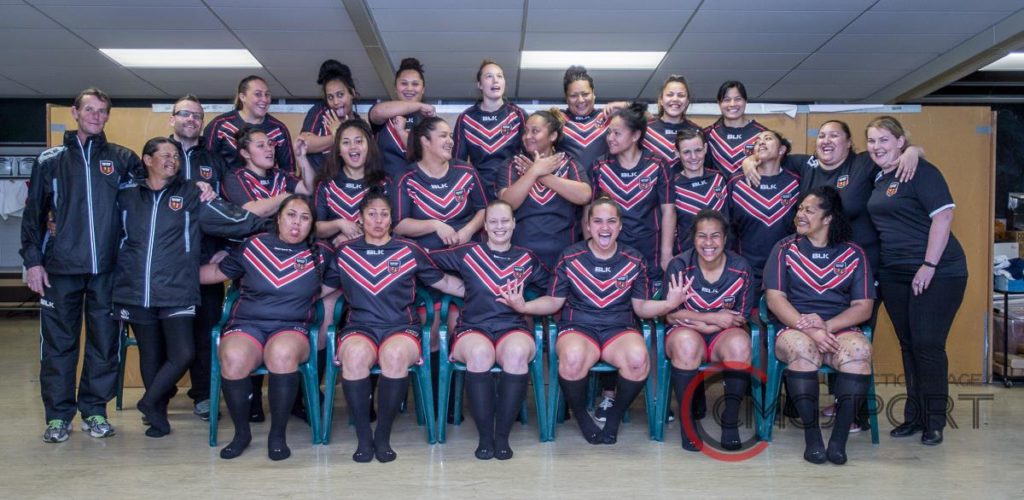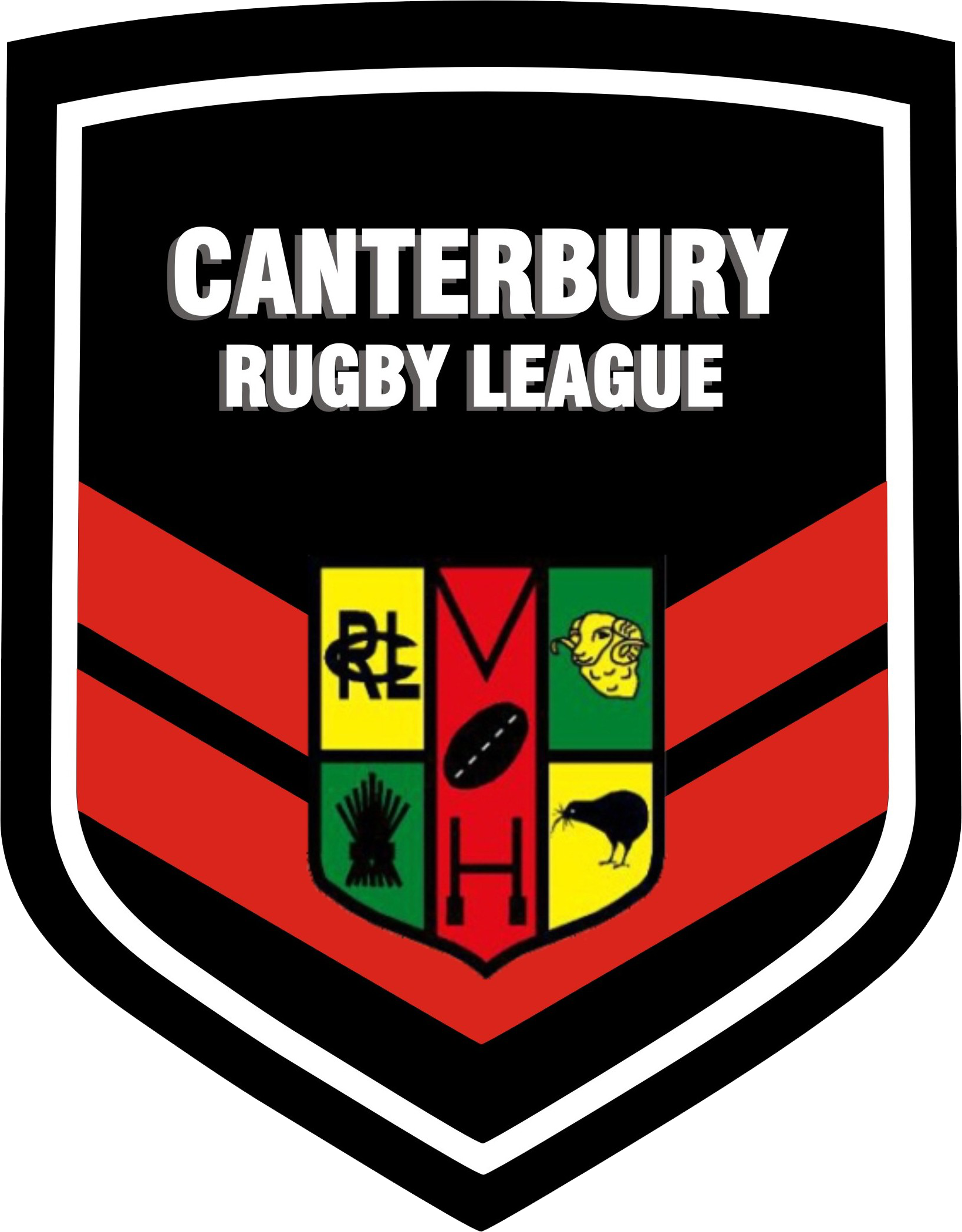Kiwi Ferns Recognition Caps Watershed Year For Canterbury Women
Women’s rugby league has enjoyed a massive upsurge throughout New Zealand and Australia in recent years, and that trend was reflected in Canterbury during a bumper 2016.
In a watershed season for the code, a spike in women’s playing numbers ensured one of the strongest Canterbury club competitions ever staged in the region, with Papanui Tigers winning the 2016 grand final to go with their Mary Brennan Women’s Nine-a-side title.
The Canterbury Women’s team achieved an unprecedented third-placed finish at the National Tournament in September, winning three of their five games.
Last in 2014 and ’15, the Michael Linton-coached Canterbury side finished behind only traditional powerhouses Counties-Manukau and Akarana, while chalking up victories over Central Vipers, Auckland Vulcans and Wai-Coa-Bay Stallions.
The red-and-blacks’ stellar performances at the tournament resulted in four players being called into the Kiwi Ferns training squad: Tigers teammates Yasmin Puru-Tongia (20), Corrina Whiley (22) and Charntay Poko (20), and Woolston Rams’ Janaya Mata.
The quartet travel to Auckland this weekend to trial for the Kiwis Ferns squad that will take on the Australian Jillaroos in the annual three-match series at the NRL Auckland Nines in February.
Linton, who was named Outstanding Coach of the nationals, is ecstatic with the progress the women’s game has made in Canterbury.
“It’s taken a lot of work to get here, but to see how much the game’s grown – and there’s more girls out there – it actually proves there’s plenty of talent in the region,” Linton says.
“Hopefully it sets the way for other girls in the region to want to be a part of it when they’re seeing players get Kiwi Ferns recognition and stuff like that.”
Coach of the Canterbury Women’s team for the past three years, Linton credits the increasing strength of the club competition for the recent team and individual successes at representative level.
“It definitely comes back to the club competition. The fact that they’ve played league week in, week out for six months is massive.
“They’re able to learn the game while playing, and while also getting a good conditioning base and building club combinations.
“(There’s) more player numbers, more talent out there, and it’s really been driven by the players. The players have been taking ownership themselves, which is really cool.”
Linton was full of praise for the members of his Canterbury side, whose focus wasn’t on winning games as much as it was improving and supporting one another as a team, and enjoying the experience.
“They gave up a lot to be able to be part of the team, whether it was financial sacrifice, or the sacrifice of their families and being away from their kids,” he says.
“For them it was more about seeing themselves develop and grow, but also seeing something much bigger – the (progress) of women’s rugby league.
“The results were just a by-product of that. Obviously they did want to go up and do well, and play with pride and be proud of their results.
“But I think the fact they cared about each other and cared about how they played, the results came off the back of that. It was just cool that the girls were focussing on the team environment first, and the results came with that.
“Hopefully we can keep that culture within the side.”
The Nines revolution has had an enormous impact on the women’s game. Since its 2015 debut, the Ferns-Jillaroos series has proved one of the weekend’s biggest highlights and provided rare live television exposure.
The flow-on effect has given the 13-a-side game a much-needed boost, with this year’s trans-Tasman Test given equal headline billing alongside the men’s ANZAC Test in Newcastle.
Ferns stars Sarina Fiso and Georgia Hale, along with Jillaroos guns Sam Hammond, Kezie Apps and Ruan Sims, are becoming household names – and it may not be long before Canterbury’s finest reach that level of recognition.
Puru-Tongia was in the Kiwi Ferns training set-up last year, while Whiley picked up the Canterbury Women’s Rookie of the Year prize at last week’s CRL Awards Evening, and Poko was named the rep side’s Most Outstanding Player.
And former Sydenham stalwart Linton stresses the southern ladies aren’t there just to make up the numbers. While regarding this weekend’s camp as a big opportunity, Linton believes it is only a matter of time before we see players from the region donning the black and white jumper.
“They’ve just got amazing talent, and I still don’t think that they believe how good they can be,” the coach enthuses.
“It’s great that there’s four of them so they can experience it together, share the journey and help each other out. If one of them is having a tough time, they can lean on each other.
“I’m looking forward to seeing them up there. They’ve got so much potential.
“I definitely think they should be (in the Kiwi Ferns team). I can see them making the cut this year.
“Yasmin was (in the training squad) last year, and I think she’s learnt a lot around what’s expected and what that step up is like. She has the experience behind her and she can help guide the other girls.
“At the (national) tournament, some of these girls were the best in their position without a doubt. I expect to seeing them cracking it.”
While representative rewards may be the ultimate payoff, Linton says the ongoing development of the club competition is vital to capitalising on the gains women’s rugby league has made in Canterbury recently.
“There’s two factors to that. Firstly, sustainability of the teams – it’s no good having eight teams where half of them aren’t very strong. You’d rather have five good, strong teams than have an eight-team competition where half of them struggle to compete.
“So making sure we have sustainability of the club teams before we grow is a challenge, and the other challenge is the development of the schoolgirls. We need to make sure we’ve got the next generation coming through ready to play.
“Canterbury Rugby League know that that’s the next thing to do, but really targeting that schoolgirl age and giving them a bit of a pathway into seniors, where they can come in and they’ve already got some of the base skills down.”
There is still a long way to go before Canterbury can boast the same quality at club and rep level as NSW, Queensland and the Auckland stronghold, but the overriding emotions as 2016 draws to a close is optimism and enthusiasm.
“We’re definitely looking forward to where it can go from here,” Linton says.
“A lot of people put a lot of hard work into getting it to this point.”
“I just love it and want to see the game grow, but there’s players out that are really putting in the hard yards, sacrificing a lot of time and effort to make sure that happens.
“I know that sometimes as the coach you get all the glory, but there’s plenty of people around me working harder than I do to keep women’s rugby league going.
“And I think that’s the cool thing, that they are doing it off their own bat because they just love it.”
WILL EVANS – CANTERBURY RUGBY LEAGUE

